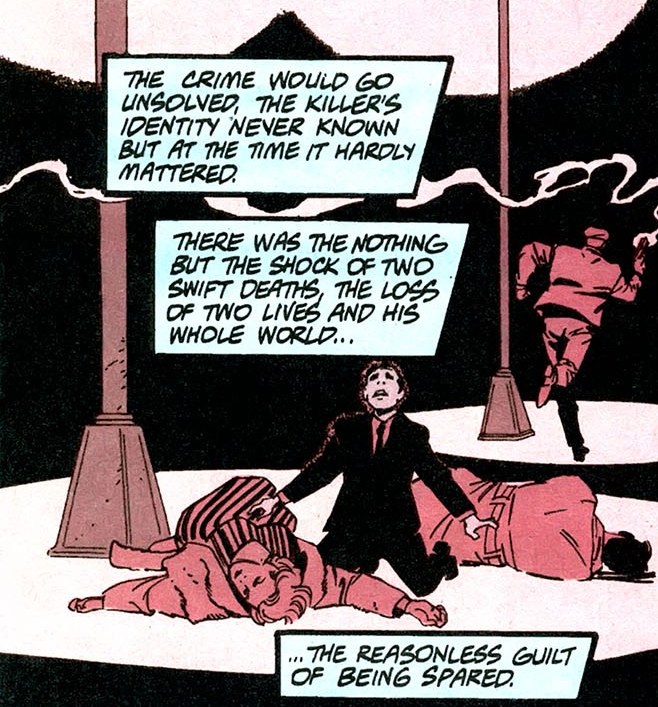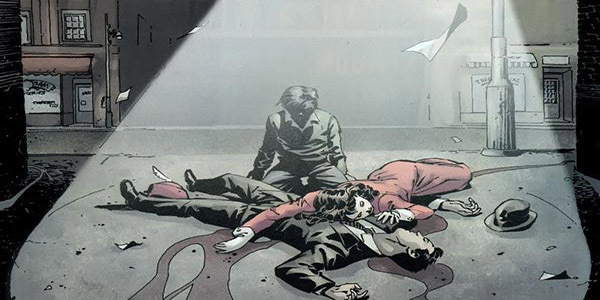2019 marks an important milestone for Batman. Created in 1939 by Bill Finger and Bob Kane, Batman has become a global icon spanning cultures and languages beyond anything his creators could have dreamed. Batman has been defending Gotham for 80 years and shows no signs of retiring anytime soon.

Batman followed the creation of Superman as a crime-fighting vigilante and quickly proved that the Man of Steel’s shadow was not one he intended to remain in. Superman became an icon of the classic American dream by arriving in the US from a distant place and building a sturdy future on the foundation of hard work, justice, and family values. Bruce Wayne, in even his earliest incarnations as Batman, defined a unique version of the American dream. Where Superman created a legacy from nothing, Batman’s dream is more internal, acting as an example of creating proactive good from a place of darkness.
Classic superheroes like Batman maintain their relevance in part by acting as a mirror to individual observers. We can see ourselves in their stories and cope with difficult aspects of reality by looking to their fictional example. Superman represents the ‘everyman’ by becoming a hero in spite of his modest upbringing and ordinary home circumstances. He has superhuman abilities, but Clark Kent is a blank canvas. He encourages the belief that anyone can start at the bottom and become something bigger than themselves. Bruce Wayne is not so universal. His wealth sets him apart from the average person and filters him into the 1%. He becomes the everyman not because of his upbringing and social standing, but because his emotions are universally understood.

When Martha and Thomas Wayne are killed, their son is motivated by the tragedy. Readers understand Bruce on a personal level. We can connect to pain, loss, and anger even if we can’t connect to growing up in a wealthy family. What that pain motivates him to do, and how his life changes because of it, defines his legacy. Batman is a version of the American dream that accounts for how emotion and trauma impact an individual’s future. Bruce Wayne makes a choice to turn his trauma into action. By vowing to protect others from the loss he suffered, Bruce is building a stronger community and brighter future. Naturally, the choice is not as simple as it may sound. Fighting darkness means having a lifelong intimacy with the worst sides of people. Half the battle for Batman is re-making this choice daily and rising above evil in every form it takes.

The villains of Gotham contrast perfectly with Batman’s crusade. Many personify alternative values that recklessly negate the well being of others. The Joker says it best in Alan Moore’s The Killing Joke, “one bad day” is all it takes to cross the line from ordinary person to unstable villain. Even Batman’s most empathetic and well-meaning advisories cross a line. They do not hold themselves to the strict personal code of the Dark Knight. No matter how noble the cause, a person who does not hold themselves accountable for personal or societal law has little chance of helping long term. The rules Bruce sets for himself are critical to Batman’s upkeep. It is likely that they keep him from crossing over the line of insanity and create structure for him to fall back on in his darkest moments. If he follows the rules, stays on the path, one bad day will never send Bruce over the edge.

The strongest example of this resolve rests in one of the hardest losses Bruce faces after his parents. When Jason Todd is beaten and killed by the Joker, Batman is left to contemplate how much of the incident is his fault. Was his role as Batman positive for Jason? Did taking Jason under his wing have any hope of making the world a better place, or was it the wrong decision? When Jason comes back as Red Hood, his deepest wound is not that Batman did not save him but that Batman did not kill The Joker in retaliation. Jason is hurt that his death would not be reason enough for Batman to break his code. He sees it as a personal slight and suggests Batman’s resolve comes from a place of apathy, not personal discipline.
Jason Todd is not the only character to question Batman’s motives in letting the Joker live to escape from Arkham Asylum time and time again. The Joker himself has a theory. He believes that on a subconscious level, Batman must know that he needs The Joker to justify his role as a masked hero. The Joker sees himself as Batman’s prime motivation and enabler. Gotham is a cat and mouse game, one that can be played if there are only cats or only mice. The theory is chilling, but fortunately, readers know that Batman was not created as a reaction to the Joker. Should the Joker die, Bruce will still have the goal of protecting Gotham’s innocent. It’s a double-edged sword, both confirming that Batman is not humoring the Joker for the sake of his own relevancy, and foreshadowing that there will never be an easy way out for Bruce. Crime will always exist, so the world will always need him. Instead, when Batman resists killing the Joker, he is doing so with an understanding that no man should be judge, jury, and executioner. The responsibility is too massive and consequences too severe if he waivers in his morality. Ironically, Jason Todd is an example of why Batman cannot break his own rules. His sidekick’s death was the result of making miscalculations and bad calls. Batman is imperfect and thus should not have the option of carrying out capital justice. It is a refusal to play god that many other heroes struggle with, sometimes to the point of becoming a villain, and part of what makes Batman’s example iconic.
It is possible to have a legacy of goodness and make the world brighter in the aftermath of tragedy. Through Batman, we understand this is not a ‘happily ever after’ goal. Being a force of good takes backbreaking (no pun intended) work. Bruce’s identity as Batman is not a constant. Opinions about him change, other vigilantes wear his symbol, and the fight is never-ending. His work is physically and emotionally draining, causing Bruce to re-evaluate his role and evolve based on what is best for the people he protects. The constant is that Bruce wants to do good in the world. The death of his parents pushes him forward and he struggles with the choices he’s made in the fallout. Perhaps most importantly, he does not always make the right call. Sometimes Batman fails. Through further loss, torture, and loneliness, Batman is still a light in the darkness that refuses to be defeated. We respect his cause out of empathy and are fascinated by his adventures out of a need to confirm that the light is still shining – not just in Gotham, but in ourselves.